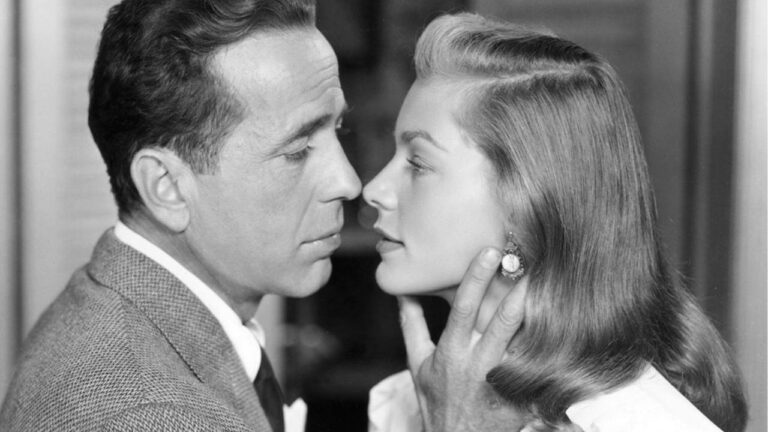13 Motorcycles Known for Their Deadly Reputation

While modern sportbikes may be at the top of the accident statistics, that’s usually more of a rider skill problem than bad bikes. Ridden sensibly, they’re not more dangerous than other motorcycles.
If we look at bikes from the past, there are some truly deadly machines out there. In an era when manufacturers focused on power, other parts, such as the chassis, suspension, and tire technology, couldn’t keep up with the sheer speed.
Yamaha V-Max VMX1200

Yamaha released the original V-Max 1200 in the mid-1980s as a response to Honda’s VFC1100C Magna power cruiser. Thanks to its 145 hp engine, the V-Max annihilated the Honda.
It weighed 604lbs but reached 60 mph in just over three seconds. Unfortunately, it handled like a wet noodle, and the brakes felt wooden and unresponsive. The V-Max soon earned a reputation as a hooligan’s bike, and riders were stereotyped as either very brave or not very bright.
Suzuki TL1000R

Suzuki has built many excellent sportbikes over the years, and the TL1000R came close to being one of them. Its 135-hp V-twin engine was a beast, and in a time when rider aids, such as traction control and riding modes, didn’t exist, it could be a handful.
However, the TL1000R suffered from more serious problems. It’s short wheelbase and aggressive geometry made it twitchy, and the rear suspension was faulty, making it seize up during hard riding. At least that can be fixed by installing modern aftermarket suspension.
Brough Superior SS100

Few bikes are as legendary as the Brough Superior. In fact, it was so good it was known as the Rolls-Royce of motorcycles. The problem was that it produced 50-hp using 1920s technology.
At the time, other bikes may have 15 to 20-hp, and parts such as brakes, suspension, and tires weren’t able to tame the Brough Superior’s massive power. T.E. Lawrence, better known as Lawrence of Arabia, died when he crashed his Brough Superior, which led to the introduction of helmet laws.
Vincent Black Shadow

The Vincent Black Shadow is another iconic classic motorcycle that’s secured its spot in the motorcycle hall of fame. It looked stunning and had plenty of power. With a top speed of 125 mph, it was the fastest bike of its era.
Since there wasn’t much safety gear available back then, its speed alone would make it dangerous. The Black Shadow was reserved for the bravest riders because it suffered a lot of frame flex when cornering, and the brakes were seemingly made of cream cheese.
Suzuki RG500 Gamma

The Suzuki RG500 Gamma was the king of the race replicas back in the 1980s, and the actual race version dominated the racetrack thanks to its excellent chassis and brakes.
If it was so good, why was it dangerous? Because the engine had a brutal power delivery that caused high-side crashes on both the road and track. Even experienced racers found it hard to handle, so the average riding enthusiast didn’t stand a chance.
Maico 700

The Maico 700 first arrived in the 1980s and was resurrected in 2009. To say it’s scary to ride is an understatement! No matter how good your throttle control is, a 700cc 2-stroke dirt bike will be near-impossible to control.
Weighing just 220 lbs and packing over 80-hp, alongside a healthy dose of 2-stroke torque, makes it one of the most dangerous bikes ever made!
Suzuki TM400

Over a decade before the Maico 700 entered production, Suzuki wanted to build an overly powerful motocross bike. In 1971, they unleashed the TM400 Cyclone. Even though it only had 40-hp, it was still a monster.
The TM400s frame was too lightweight, so it would bend and flex. That’s enough to make the bike difficult to handle. Its poor ignition system and extreme tuning didn’t make things any easier. All the power would arrive at some point between 3500 and 5000 rpm, you’d never know exactly when it would happen, and when it did, just hang on for dear life.
Suzuki X7

Another Suzuki! The X7 was an affordable and fast 250 bike, and what more could a motorcycle enthusiast ask for? Well, perhaps one that didn’t wheelie as soon as one touched the throttle. It also had a weak frame and a flimsy chassis.
Thanks to its speed and power, the X7 was one of the most popular bikes among beginner riders but was also one of the least suitable. Suzuki even built a 200cc version called the X5, which was even lighter and cheaper but just as difficult to handle.
Kawasaki H1 500 Mach III

At first glance, the 1970 Kawasaki H1 500 Mach III may not look like much. Even its engine size is somewhat underwhelming, with just a 498cc displacement. Motorcycle history buffs know what horrors the H1 is capable of, though.
Make sure you have good insurance if you want to ride one. It may just be a 500, but it’s a 2-stroke triple-cylinder unit, and its 60-hp made it one of the most powerful bikes of the era. The handling was questionable at best, and Kawasaki had the genius idea of placing neutral below first gear.
Kawasaki KH750 H2

Another Kawasaki monster with a 2-stroke 3-cylinder engine. The H2 earned its nickname “the Widow Maker” because it was absolutely frightening to ride. Kawasaki clearly thought the H1 wasn’t enough, so they pushed power to 75-hp and 57 lb-ft of torque.
The problem was the way it delivered its power. Nothing would happen at first; then, as it hit 6500 rpm, everything arrived at once. Combined with poor brakes and lots of frame flex, the original H2 wasn’t a toy. Kawasaki did update it in 1974, altering the steering geometry and fitting a longer swingarm, and while it was an improvement, it still wasn’t great.
Any 1980s Turbocharged Motorcycle

In the 1980s, turbocharging technology was still relatively new and exciting, so the Japanese Big Four decided to try it out on motorcycles. This led to the creation of the Kawasaki GPZ750 Turbo, Honda CX500 Turbo, Yamaha XJ650 Turbo, and Suzuki XN85, and they were horrible.
Sure, they had plenty of power but suffered from excess weight and turbo-lag. Hot turbochargers near the rider’s legs weren’t ideal either. There’s a reason why turbocharged motorcycles never caught on outside the custom bike scene.
AMF-Era Harley-Davidson Sportster

As much as we love the Harley-Davidson Sportster, there’s no denying that the ones built during the AMF era were rubbish. Basically, H-D struggled financially and was bought by American Machine and Foundry Company, and the quality of the bikes took a plunge until the early 1980s.
While the Sportster undoubtedly helped keep the Milwaukee-based manufacturer alive, it also suffered from severe build quality issues, a lack of power, overweight, and horrible handling.
Harley-Davidson V-Rod

The Harley-Davidson V-Rod is among the greatest bikes the American brand has ever built, in part thanks to Porsche and its engine know-how. It looks stunning, has plenty of power, and it’s even quite comfortable.
The problem with the V-Rod is that it’s so low that it’s hard to get through some corners. It only has 30 degrees of lean angle, so any corner that’s more aggressive than a large roundabout is a problem. If you hit a bump while the bike is leaned over, it can compress the suspension, and the sub-frame can lift the rear wheel off the road. This can lead to a low-side crash and send you sliding down the road.





